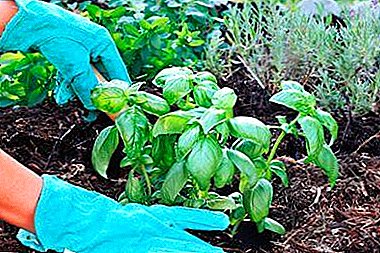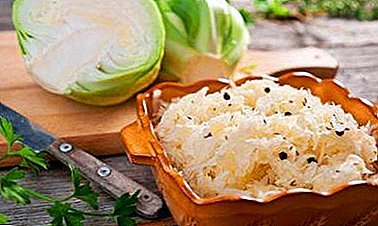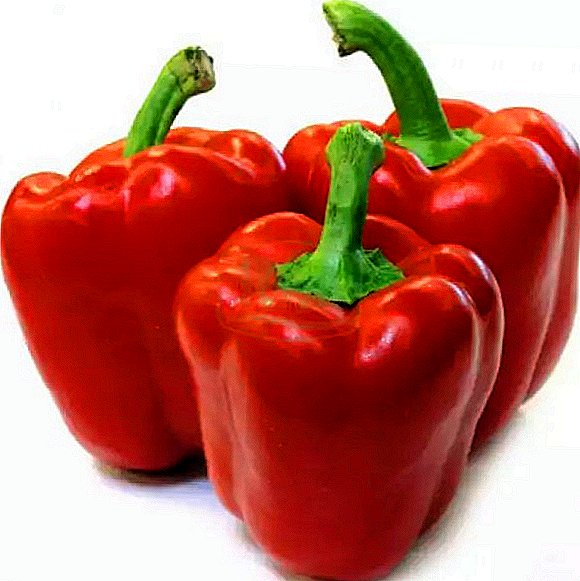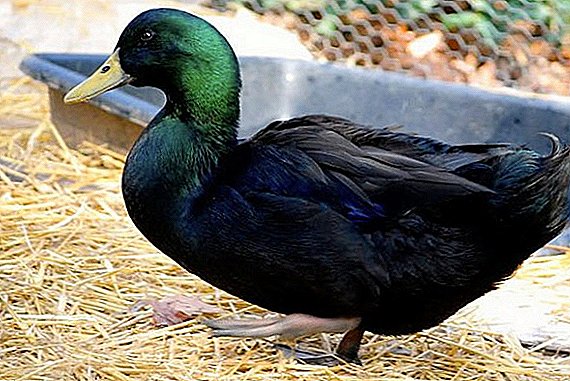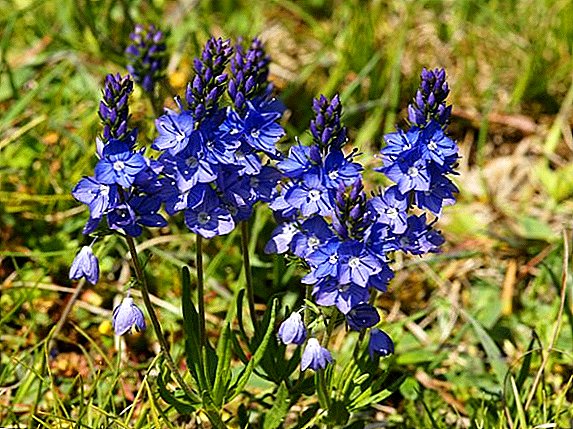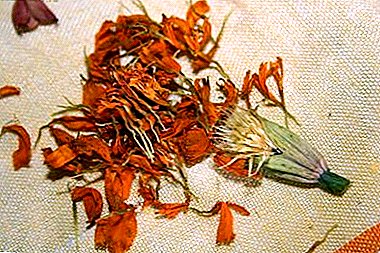
Store shelves are full of bright bags with seeds of garden plants. But despite this, many growers prefer to independently stock up with sowing material. Various arguments sound in favor of such a decision: a guarantee of good germination, a saving of funds, and it is also known for certain that it will grow.
Some arguments are not indisputable, but if it concerns marigolds, then the assertion about the money saved comes out on top. This flower is so popular that the number of seeds needed to decorate a garden can go on hundreds. Avoid unnecessary expenses by collecting seed boxes in your own garden or on flowerbeds.
Flower description
Marigolds or Tagetes - ornamental herbaceous plant. This native of the subtropical regions of Mexico, successfully settled down in most countries of the world.
Its wide popularity is explained by its decorativeness and unpretentiousness to the growing conditions. Spectacular flower grows well on poor soils and is able to withstand a short drought.
Bright green balls dotted with hundreds of sunny, small inflorescences. Meter, juicy stems, topped with flowers, the size of a tea saucer. Low bushes, painting the borders of flower beds in maroon tones. This is all said about marigolds, the variety variety of which is growing every year. Learn more about marigold varieties, about the features of their cultivation in the open field, as well as see the description and photo of flowers here, and in this material read about the perennial species of this flower).
Currently, there are about sixty plant varieties. Vegetable growers grow marigold in the beds next to garden crops. Marigolds - reliable protection against aphids, nematodes, larvae of May beetles and pathogens of fungal infections.
What does the seed of the tagges look like?
Tagetesy bloom profusely from early June to the onset of the first frost. Throughout the summer, you can see on the plants similar to goblets, dried boxes tightly stuffed with several dozen seed plants. View photos of marigolds, as well as find out why they sometimes do not want to dismiss the buds here.
The seeds of marigolds look like flat black needles with a white tuft. Some varieties have a dark brown shade. Their length and weight depends on the size of the original flower. For example, one gram of large-flowered, upright Tagetes contains about three hundred seeds, and in a bag of low-growing thin-leaved varieties of the same weight, you can count up to seven hundred pieces (about the features of caring for short-growing marigolds here).
A photo
View photos of marigold seeds:



How to assemble correctly?
Marigolds growing in a sunny place in fertile soil, not suffering from drought, form valuable seeds.
Important! Tagetis, planted bought seeds with the designation F1, is not suitable for the role of uterine plants. He will give offspring, unpredictable colorings and heights.
If the designer plans to decorate a flower bed with a low border of these flowers, then It is not necessary to collect seed boxes in places where a mixture of tagetis grows. Different varieties easily pereopilyatsya and do not give a clean planting material.
When is it better to harvest?
Harvest dried seed baskets can be throughout the summer. The best time to collect - sunny days beginning of autumn. By this time of year, the seeds ripen well and are easily separated from the receptacle.
Seed collection consists of several simple steps:
- Choose the best plant and carefully cut it at the root.
- Spread a large sheet of light paper and shake a marigold bush over it.
- Collect the poured ripe seeds and place to dry in a dark, windless place.
Do not dry planting material on the stove and other heating appliances.
- Pack dry seeds in paper bags. If the future flowerbed allows for a mixture of plants of different heights and colors of flowers, then you can do with one general package.
- Make an inscription indicating the variety, the main characteristics of the plant and the date of collection.
There are situations when the vending bush of marigolds does not grow in your garden, and there is no way to wait for the seed boxes to fully mature. In this case, pick a twig with the most faded flowers and place it on the ripening away from direct sunlight. Comfortable temperature for ripening seeds + 23-25 degrees. When they begin to separate easily from the receptacle, dry them and store them.
Storage tips
 Do not store plastic boxes, plastic bags or other similar packaging for storage. Seeds must breathe.
Do not store plastic boxes, plastic bags or other similar packaging for storage. Seeds must breathe.- Storage temperature + 12-15 degrees.
- Keep seeds away from warm, moist air. The main condition for the preservation of germination is low humidity in the room. Therefore, a shelf or cabinet in the kitchen is not a suitable place for bags of seeds.
- Do not overshoot the safety of planting material:
- upright (African) and rejected (French) varieties remain viable for up to four years;
- fine-leaved (Mexican) - up to six years.
Is it possible to grow at home?
The collected seeds can be used not only for spring planting in flowerbeds. Marigolds grow well indoors and delight the eye with bright blooms in the winter months.
Read more about how to care for marigolds, as well as how to create conditions at home for their successful growth and flowering.
Alternative use
In indoor floriculture use the ability of these plants to fight insects phytophagi.
To make it you need:
- Take a tablespoon of chopped raw materials.
- Pour a glass of boiling water.
- Let it stand in a warm place for 3-4 hours.
Marigold seeds are rich in essential oils that act beneficially on the human body. This allows you to use them in the preparation of fragrant mixtures for sachets and herbal pillows. They relieve stress, anxiety and anxiety. In detail about the healing properties and contraindications to the use of marigolds, we described in this article, and about the features of the use of this plant in traditional medicine and cooking, read our material.
 Dry boxes filled with seeds are an excellent material for making aroma oils for relaxing baths. At home, it is easy to prepare this useful substance:
Dry boxes filled with seeds are an excellent material for making aroma oils for relaxing baths. At home, it is easy to prepare this useful substance:
- A handful of pounded seeds pour 200 grams of corn or olive oil.
- Insist 15 days in a dark place.
- Filter through a gauze napkin.
- Pour into a bottle of dark glass for storage.
Conclusion
Collecting the seeds of your favorite flowers is a useful and enjoyable experience. It makes it possible in the fall to once again talk with the plants in the garden, make plans for the next season and save money on the purchase of new green pets. Properly harvested and stored seeds are a reliable guarantee of the beauty of your future flower beds.


 Do not store plastic boxes, plastic bags or other similar packaging for storage. Seeds must breathe.
Do not store plastic boxes, plastic bags or other similar packaging for storage. Seeds must breathe.
